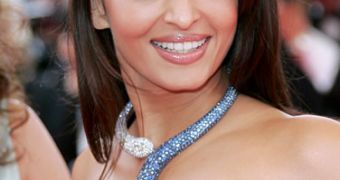The fact that computers ease human work is a technological advance. But how can we define the fact that they are able now to differentiate between a beautiful woman and one that is not so attractive, based on school-like marks? Perhaps one day they will even have sex in our place...
A new research made at the Tel Aviv University and published in the journal "Vision Research" has developed a computer software that assesses attractiveness in female faces. But there's more than triviality in this: the software could be employed in plastic and reconstructive surgery or in face recognition technologies.
"Until now, computers have been taught how to identify basic facial characteristics, such as the difference between a woman and a man, and even to detect facial expressions. But our software lets a computer make an aesthetic judgment. Linked to sentiments and abstract thought processes, humans can make a judgment, but they usually don't understand how they arrived at their conclusions," said co-author Amit Kagian, a graduate from the TAU School of Computer Sciences.
First, the 30 male and female subjects had to assess facial attractiveness of 100 different White women, roughly of the same age, based on their pictures. The volunteers put marks on a scale of 1 through 7 and did not explain their choices.
The facial traits were processed and mapped to geometric shapes. The researchers added traits like facial symmetry, skin smoothness and hair color. All these traits were connected to human rating, and the software could tell the connection between facial traits and attractiveness scores, and this was checked on a new set of faces.
"The computer produced impressive results - its rankings were very similar to the rankings people gave. This is considered a remarkable achievement, because it's as though the computer 'learned' implicitly how to interpret beauty through processing previous data it had received," said Kagian. A mathematical model for beauty had been imaged 2,500 years ago by the Greek philosopher and mathematician Pythagoras, who observed that objects following the "golden ratio," including human bodies, were the most attractive.
"Personally, I believe that some kind of universal correctness to beauty exists in nature, an aesthetic interpretation of the universal truth. But because each of us is trapped with our own human biases and personalized viewpoints, this may detract us from finding the ultimate formula to a complete understanding of beauty," said Kagian.
Instead, it appears trickier to develop software telling how attractive a man is.
"Psychological research has shown that there is less agreement as to what defines 'male beauty' among human subjects," said Kagian.

 14 DAY TRIAL //
14 DAY TRIAL //